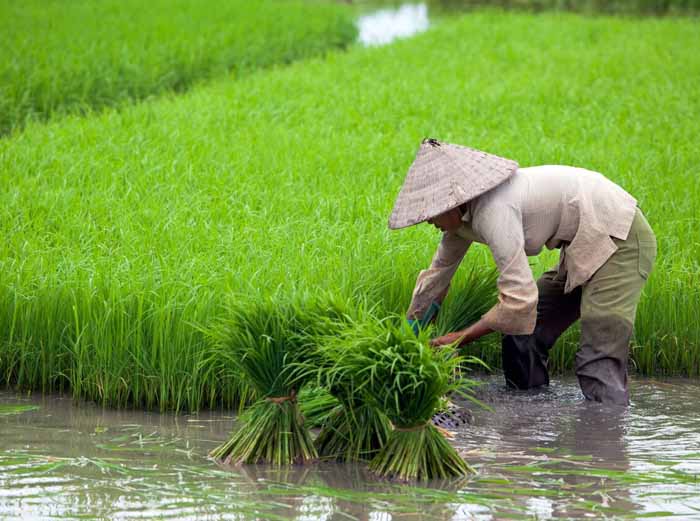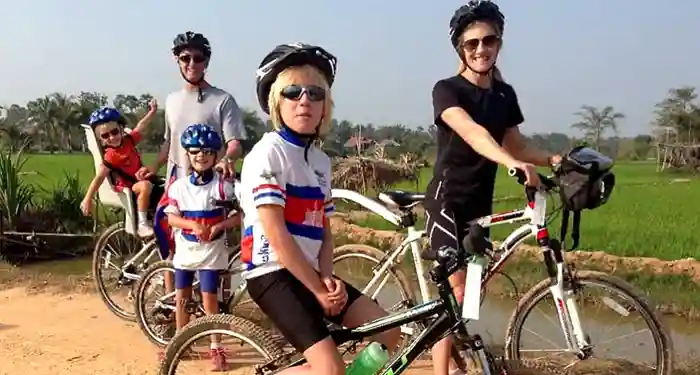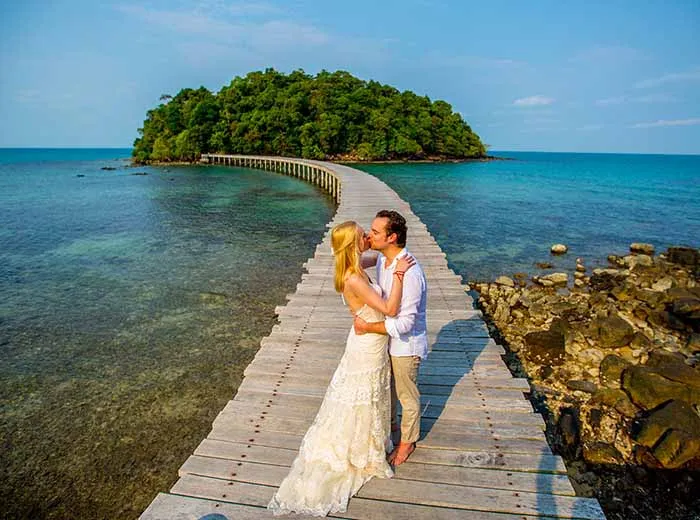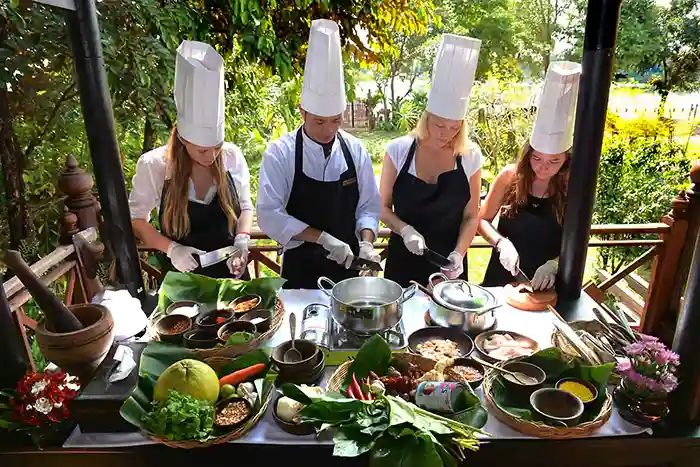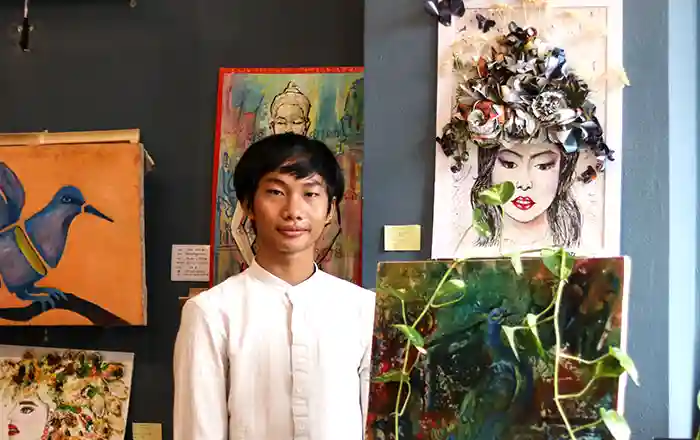CAMBODIA & Angkor Wat
There are many fascinating places beyond Angkor in Cambodia, including small, traditional villages, Asia's largest lake (Tonle Sap), lush jungle landscapes, island retreats, white sand beaches and smaller towns where few travelers venture. Below are some our recommendations of where to go in Cambodia, all of which combine easily with a tour of Angkor.

ANGKOR

"Here then are those temples which for so long seemed like visions... Here are the foundations, the plinths, the galleries, the extraordinary domes resembling multi-ringed tiaras" —Claude Farrere, L'illustration, 1931
If you've come this far to the region, you will not want to miss the "Prize of Southeast Asia" — the Temples of Angkor — short one-hour hop from Thailand or Vietnam. Angkor what? Most confuse Angkor Wat, the main temple with Angkor the city which consists of over 70 discovered ruins spread over a hundred square miles. Angkor Wat itself is a kilometer-wide one of the greatest stone monuments ever constructed. There are astounding structures of equal impact surrounding it. This density of ruins is unparalleled anywhere else in the world, and has been aptly called the "Nile Valley of Asia."
Phnom Penh

From the river, palm trees and pagoda spires of Khmer royal buildings rise over French-era shop houses and villas, the ochre buildings, squares, cafes, and frangipani-lined boulevards resembling a French provincial town. Situated at les Quatre Bras (the Four Arms), where two arms of the Mekong meet the Bassac and Tonle Sap tributaries, the city is now lesser a French creation of wide boulevards and stately mansions and more an important commercial capital.
Witness city's incredible and bizarre history, from French occupation, Vietnam War, to the Khmer Rouge's reign of terror while taking in the pockets of charm and traditions.
Siem Reap
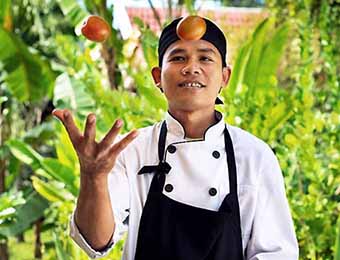
No longer simply a base for exploring the nearby Angkor temple complex, Siem Reap has within recent years become an enjoyable small town worthy of a stopover all in itself. New luxury hotels have opened up while older ones have undergone extensive renovation, including the famed Raffles. Complimenting its exotic night markets, a new and renowned "street circus," world-class dining, and shopping boutiques have sprouted up.
After a morning exploring the temples, Siem Reap offers a pleasant, walkable town only a short stroll from most hotels. Siem Reap is also one of the most kid-friendly destinations in Southeast Asia, with fascinating attractions, including a "bug restaurant" and street fish spas. We will plan your dining here, as there are new venues you should not miss and if you enjoy cooking, there are a couple of delightful classes offered in the town.
Battambang

Battambang, a tranquil town about three hours drive from Siem Reap offers a glimpse of local life in Cambodia. More than a weigh point, Battambang features well-preserved architecture and a delicious dining. Less known is that is at the cutting edge of an emerging art scene. The arts school teaches visual, applied and performing arts to almost a thousand students. The impressive street circus troupe in Siem Reap come from the visual arts center here, Phare Ponleu Selpak. We can arrange a visit, with a circus troupe performance twice a week. The art school's graduates are now opening their own art galleries, studios, and workshops, such as artist-curator Mao Soviet who runs Make Maek, and the newly opened artist-collective space called Studio Art Battambang. It’s a cavernous old shop house that exhibits large, bamboo sculptures and huge canvases. We pop next door to refuel at Kinyei, a social enterprise cafe with probably the best coffee in Cambodia (try a piccolo or a “Cambodian street latte” with palm sugar and orange essence).
Of course, we always recommend cycling where it's good in the region and here there is a half-day cycling tour for about 20 miles, looping around the villages and gives us a glimpse into the various agricultural industries – rice paper production, dried fruits, rice liquor and prahok (fermented fish paste) are some – that support Battambang’s economy.
Kratie

North along the Mekong from Phnom Penh is Kratie, a small fishing and logging town. The Mekong is navigable year-round from Phnom Penh to Kratie and a cruise is possible when the river runs high from September to January. The town has a smattering of attractive rustic French buildings and small cafes, and some 30 kilometers north of Kratie is the site of the ancient capital of Sombor, which lies close to the Mekong. Crocodiles inhabit the river in this area but Kratie is well known for its dolphins—the Mekong Irrawaddy dolphins, which are highly endangered with only about 80 said to remain.
Kratie is a pleasant base for exploring the area, of which Koh Trong is a highlight, a small island facing the town across the Mekong. The island is one of Cambodia's loveliest destinations, a virtual tropical paradise, explorable by bicycle.
Song Saa

Cambodia's first and premier beach resort. Song saa, or "The Sweethearts", is just off the southern coast from the coastal city of Sihanoukville.
The Song Saa, along with the Nam Hai and Amanoi, now offers three properties to compliment travel in Vietnam and Cambodia, rather than the longer trip down to the Thai islands. This resort offers a setting similar to Maldives properties. The resort is located on two small, private connecting islands in the middle of a marine reserve of the clear waters of the Gulf of Thailand. The resort features luxurious Over-Water, Jungle and Ocean-View villas built with sustainable materials with respect for maintaining the natural environment.
Cardamom Mountains

The Cardamom Mountains is a vast range in southwestern Cambodia stretching from the border of Thailand across the country to Vietnam. The area features Cambodia’s highest peak—Phnom Aural— at nearly six thousand feet and one of the last primitive rainforests in Southeast Asia, home to an enormous variety of plant and animal life and where wild elephants still roam free. Once a rebel holdout from the Khmer Rouge period and off-limits until recently, the Cardamoms are now a national park ever more popular for outdoors exploration.
From a base in the town of Chi Pat, we can arrange a variety of eco-adventures, including treks and river cruises into the Cardamoms National Park, overnighting within the forest. If you have interest, ask about volunteering opportunities on conservation projects within the park.
Tonle Sap Lake

Tonle Sap or "sweet water" is the remarkable inland sea in northwest Cambodia, and the name of the river linking it to the Mekong. Tonle Sap is the largest lake in Southeast Asia and one of the richest inland fisheries in the world, accounting for more than half of Cambodia’s protein intake. An area on Tonle Sap around Prek Toal village is the gathering ground for a variety of bird species, many of whom are endangered and is not a national sanctuary.
Tonle Sap is now a UNESCO Biosphere Reserve, recognized and protected for its social, cultural and scientific significance. The best time to cruise and witness life on Tonle Sap is during high water levels from October to February. For bird watching, the dry season is best.
BEST TIME TO GO
November to March
NEED TO KNOW
Visa Required
COMBINE WITH
Thailand - Vietnam
VIEW ALL NOTES
All Departure Notes












